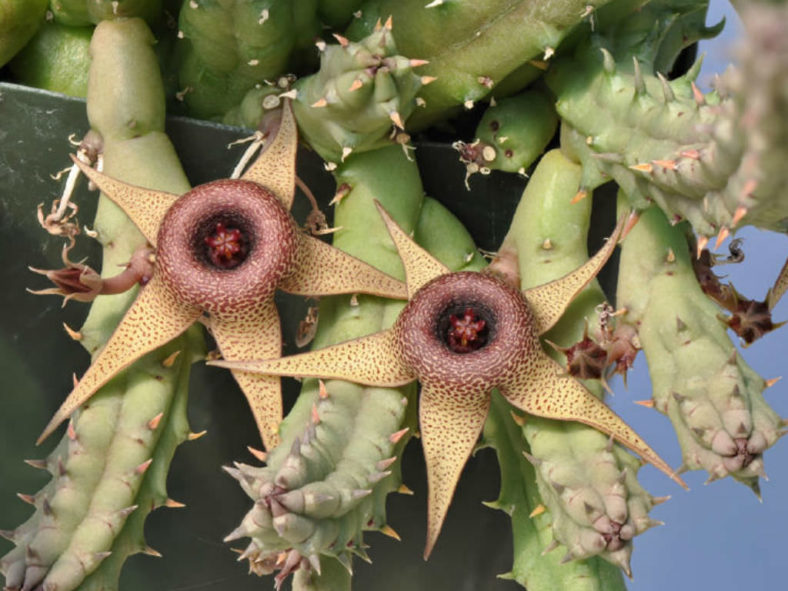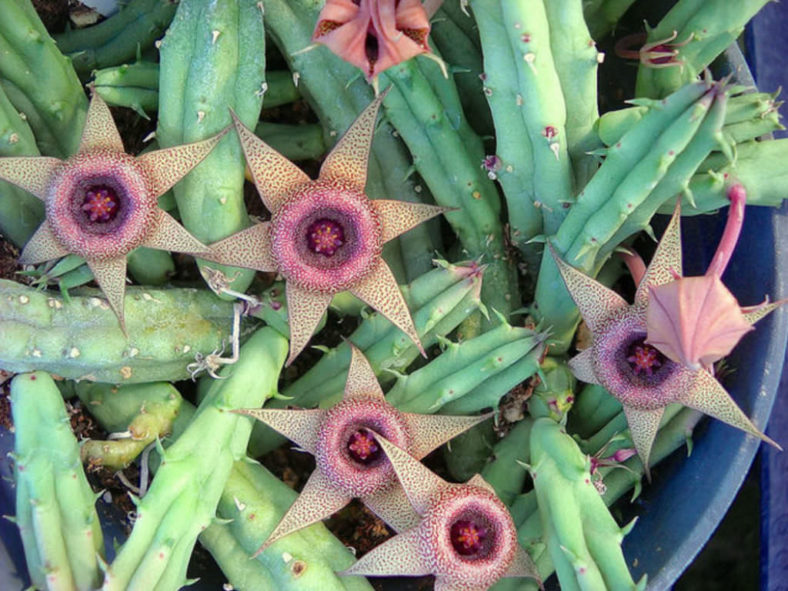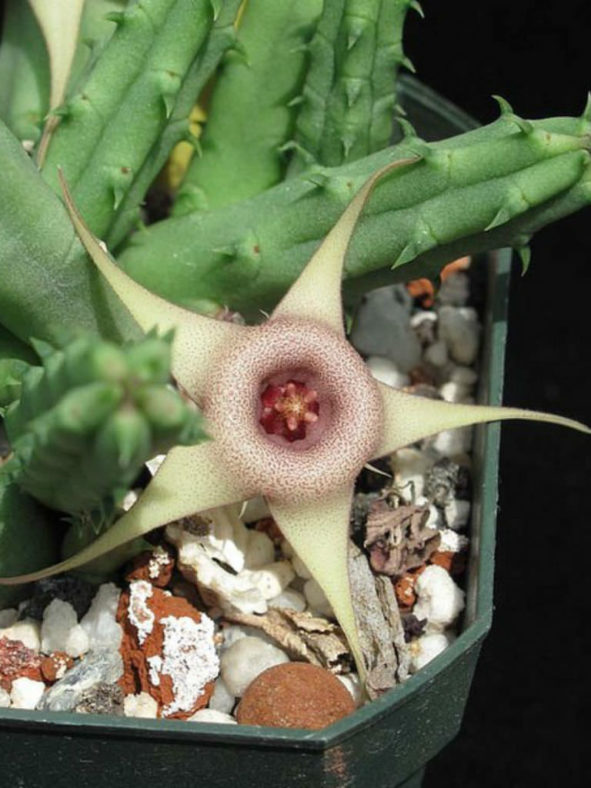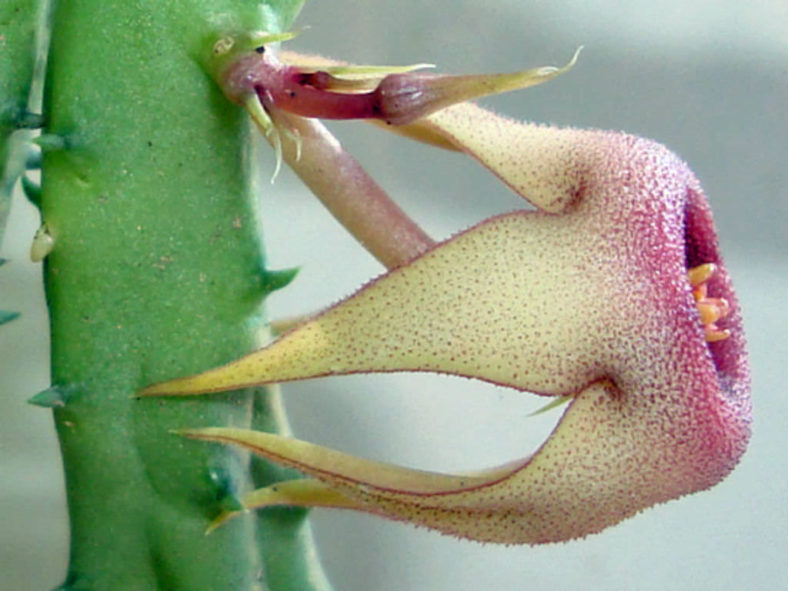Scientific Name
Huernia procumbens (R.A. Dyer) L.C. Leach
Synonym(s)
Ceropegia procumbentior, Duvalia procumbens
Scientific Classification
Family: Apocynaceae
Subfamily: Asclepiadoideae
Tribe: Stapeliae
Genus: Huernia
Etymology
The specific epithet "procumbens" (pronounced "pro-KUM-benz") means "falling forwards, sinking down, prostrating" and refers to the growth habit of this species.
Origin
The native range of Huernia procumbens is in a small area around the northeasternmost corner of South Africa and in the adjacent part of Zimbabwe. It usually grows on rock outcrops or rock ledges in shallow soil, supplemented by leaf-litter accumulations.
Description
Huernia procumbens is a low-growing succulent with prostrate stems that grow along the ground, rooting and branching, often forming a quite diffuse mat. The stems are green to purplish, nearly cylindrical, with very obscure tubercles joined into five obtuse angles along the stem, each bearing a spreading lance-shaped leaf rudiment at the apex. They can grow up to 20 inches (50 cm) long and 0.5 inches (1.2 cm) thick. The branches are weakly attached and fall off when moved even slightly.
The flowers are pretty unusual, with long, slender lobes that may be strongly reflexed and appear solitary or in groups of up to five, opening in gradual succession from a short peduncle in summer and fall. The corolla can reach a diameter of 2.2 inches (5.5 cm). Outside is smooth, pink mottled on cream to uniformly pale pink with one raised longitudinal vein running down the center of each lobe. Inside is cream-colored on lobes, becoming pink to maroon near and on the annulus, with very fine red spike-like papillae on lobes and often on the annulus. The corona is pink to pale maroon and slightly raised on a minute stipe.

How to Grow and Care for Huernia procumbens
Hardiness: USDA hardiness zones 9b to 11b: from 25°F (-3.9°C) to 50°F (10°C).
Huernias require a potting mix with excellent drainage. A succulent plant mix of 50 percent pumice or perlite, 25 percent peat or organic mulch, and 25 percent sand helps prevent rotting and overwatering. Roots experience dieback during cool-season dormancy, so plants grow best in shallow containers that allow the soil to dry out quickly. Using clay pots further helps the soil from staying too wet. An underlayment of coarse gravel below the soil mix also improves drainage. In climates with damp, cool summers, a layer of gravel between the plant and the soil mix also helps prevent the stems from staying too moist.
Outdoor plantings do well in raised beds. Huernias prefer bright light or partial shade. In nature, they grow underneath shrubs or other plants. Too much sun causes stems to develop protective reddish or purplish pigmentation and can actually scald them. Too little light leads to weak, thin growth with decreased flower production. Huernias grow best between 50°F and 80°F (10°C and 27°C). Protect them from freezing weather.
See more at How to Grow and Care for Huernia.
Links
- Back to genus Huernia
- Succupedia: Browse succulents by Scientific Name, Common Name, Genus, Family, USDA Hardiness Zone, Origin, or cacti by Genus
Photo Gallery
Click on a photo to see a larger version.


